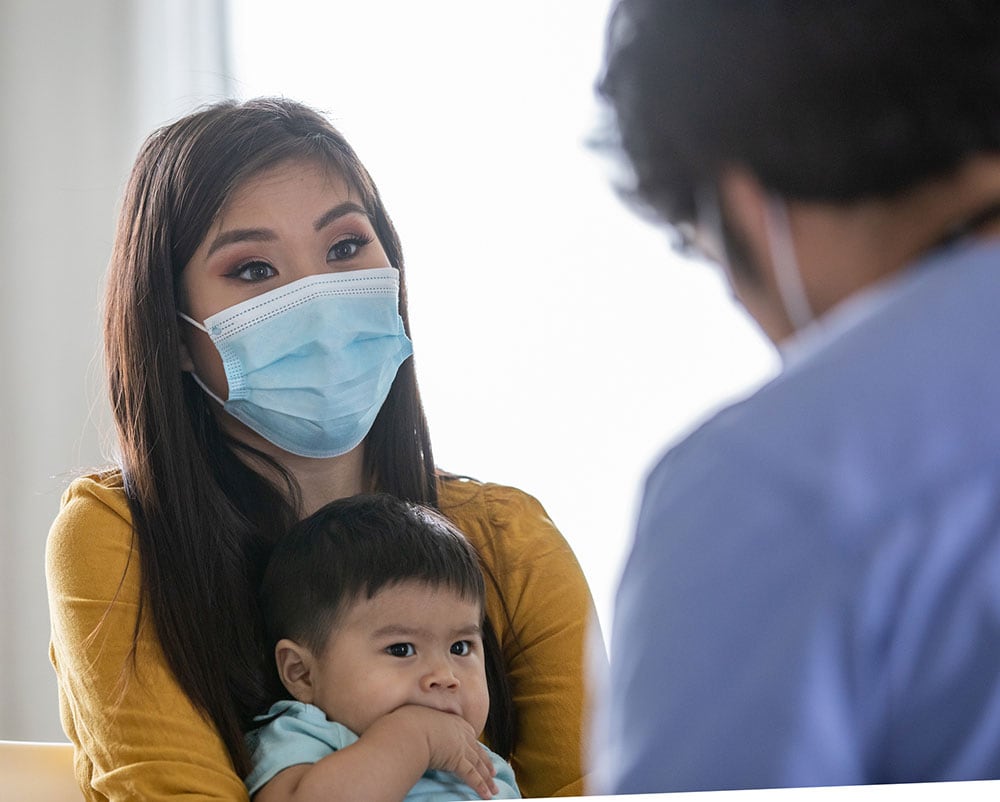Making the Vaccine Decision: Addressing Common Concerns
Parents often have questions about the vaccines recommended for their children. Your child’s doctor can answer any questions you might have. Most families decide to follow the recommended vaccination schedule.

Vaccines protect against diseases
Different vaccines work in different ways, but every vaccine helps the body’s immune system learn how to fight germs. It typically takes a few weeks for protection to develop after vaccination, but that protection can last a lifetime. A few vaccines, such as those for tetanus or seasonal flu, require occasional booster doses to maintain the body’s defenses.
Strengthening your baby’s immune system
Immunity is the body’s way of preventing disease. Because a baby’s immune system is not fully developed at birth, babies face a greater risk of becoming infected and getting seriously ill. Vaccines help teach the immune system learn how to defend against germs. Vaccination protects your baby by helping build up their natural defenses.

Children are exposed to thousands of germs every day. This happens through the food they eat, the air they breathe, and the things they put in their mouth.

Babies are born with immune systems that can fight most germs, but some germs cause serious or even deadly diseases a baby can’t handle. For those, babies need the help of vaccines.

Vaccines use very small amounts of antigens to help your child’s immune system recognize and learn to fight serious diseases. Antigens are the parts of a germ that cause the body’s immune system to go to work.
Learn more about how vaccines work with the body’s immune system and different types of immunity.
Vaccine ingredients
Today’s vaccines use only the ingredients they need to be as safe and effective as possible. A vaccine could include any of these kinds of ingredients:
- Adjuvants such as aluminum salts help boost the body’s response to a vaccination. (Also found in antacids, antiperspirants, etc.)
- Stabilizers such as sugars or gelatin help keep a vaccine effective after it is manufactured. (Naturally present in the body and found in foods such as Jell-O®.)
- Formaldehyde helps prevent bacterial contamination during manufacturing. Formaldehyde is naturally present in the body at levels higher than vaccines. (Also found in the environment, preservatives, and household products.)
- Thimerosal is a preservative used in the vaccine manufacturing process. It is no longer used to make any vaccine except multi-dose vials of the flu vaccine. Single dose vials of the flu vaccine are available as an alternative.
Some websites may claim that ingredients are harmful; make sure you seek information from credible sources.
Vaccines are safe
Before a new vaccine is ever given to people, extensive lab testing is done. Once testing in people begins, it can still take years before clinical studies are complete and the vaccine is licensed.
After a vaccine is licensed, the Food and Drug Administration (FDA), CDC, National Institutes of Health (NIH), and other federal agencies continue routine monitoring and investigate any potential safety concerns.
CDC and the FDA take great care to make sure that a vaccine is safe both before it is licensed and after the public begins using it. Making sure that all vaccines are safe is a top priority for CDC.
Mild side effects are expected
Vaccines, like medicine, can have some side effects. But most people who get vaccinated have only mild side effects or none at all. The most common side effects include fever, tiredness, body aches, and redness, swelling, and tenderness where the shot was given. Mild reactions usually go away on their own within a few days. Serious, long-lasting side effects are extremely rare. We know they are rare because CDC tracks and investigates reports of serious side effects.
If you have questions or concerns about a vaccine, talk with your child’s doctor. Learn about the safety of each recommended vaccine.
Vaccines can prevent common diseases that used to seriously harm or even kill infants, children, and adults. Without vaccines, your child is at risk of becoming seriously ill or even dying from childhood diseases such as measles and whooping cough.
It is always better to prevent a disease than to treat one after it occurs.
- Vaccination is a safe, highly effective, and easy way to help keep your family healthy.
- The recommended vaccination schedule balances when a child is likely to be exposed to a disease and when a vaccine will be most effective.
- Vaccines are tested to ensure they can be given safely and effectively at the recommended ages.
CDC vaccine information statements (VISs) explain both the benefits and risks of a vaccine. Your health care provider can give you the VIS for any vaccine.

